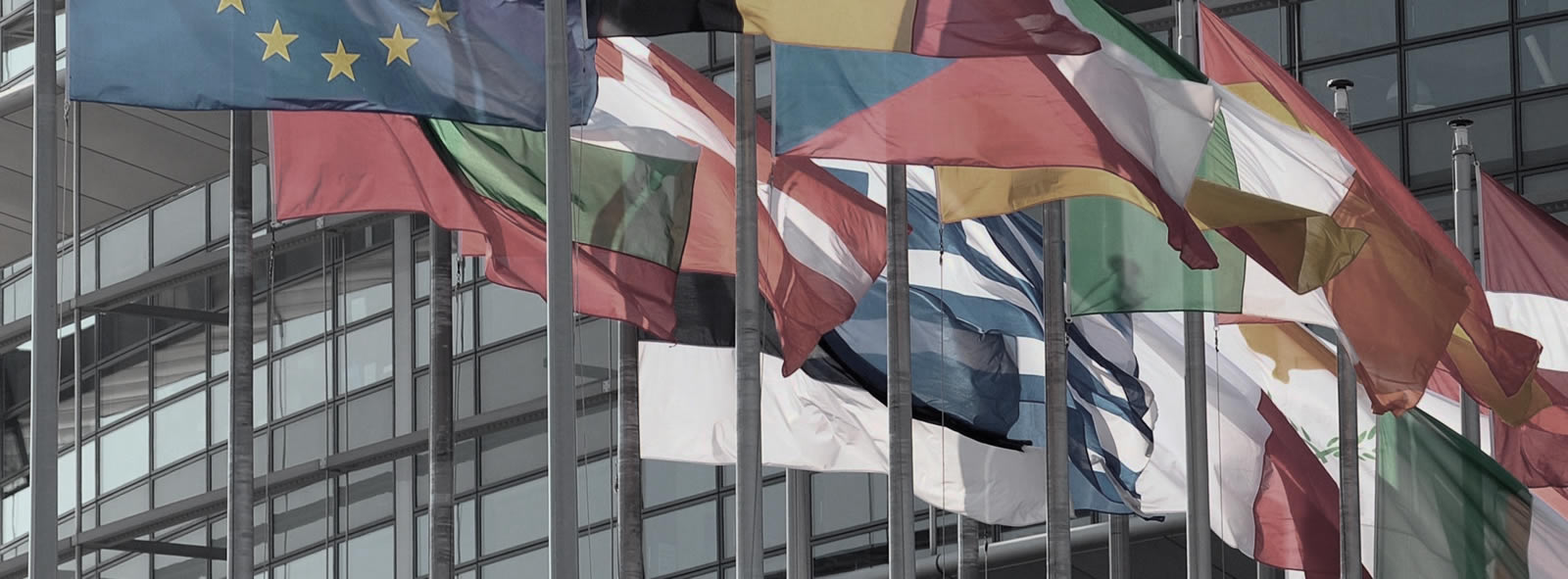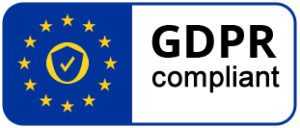22 Sep 2022 Feedback on the revision of Standardisation Regulation 1025/2012 & the Standardisation Strategy
Eurosmart welcomes the Commission’s proposal to update Regulation 1025/2012 to ensure that National Standardisation Bodies (NSBs) are in the driving seat for European standardisation. If adopted, the legislation will rule that only European NSBs have the decision-making power to handle standardisation requests and prepare harmonised standards. This proposal recognises that standardisation is strategic and tightly connected to EU political priorities.
The proposal provides two relevant initiatives to strengthen the EU standardisation policy: (1) the creation of the High-level Forum to assist the European Commission in the identification of standardisation priority and (2) the development of the EU Excellence hub to foster the excellence of the EU standardisation system at the international level.
Eurosmart is really supportive of these two approaches and recommends liaising with already existing EU initiatives to enable a fully efficient standardisation strategy.
Eurosmart also supports the Standardisation Strategy that aims to strengthen Europe’s resources and position in the field.
Why are standards so important for the EU?
Standards play a tremendous role in the EU Single Market. They enable harmonisation and interoperability among products and stronger product characteristics (security, safety, energy efficiency, performance etc.). They increase the level of quality of products and services by defining ambitious and comprehensive requirements. By doing so, they foster permanent innovations, both in design but also production. As such, standards bring competitiveness to the industry.
In addition, standardisation creates a harmonised market, increasing business opportunities and economies of scale. The EU is the first exporter and importer of goods and services worldwide. Foreign trade accounts for over 30% of its GDP[1]. The EU is also the world’s largest single market area[2]. Given the EU’s economic weight in the world, European standards can quickly become worldwide references. In short, European standards have the potential to give a company more straightforward access to both the Single Market and international markets.
Legislation usually requires compliance with essential requirements. When the legislation requires assessment by a third party, compliance is done through a certification scheme, also involving a test methods standard. In the case of self-assessment, the manufacturer evaluates compliance with the standard, possibly relying on a test methods standard. Thus, the development and adoption of standards come together with solid expertise to verify the conformity of products to be put on the market. A whole ecosystem of European private companies, including conformity assessment bodies and laboratories, has flourished. These conformity verification skills are instrumental for the EU Single Market.
Standards are also very political as they translate EU priorities and needs. EU political priorities are enacted through essential requirements and further detailed through technical measures guiding vendors. In many cases, the policies and values of the EU could not take a concrete shape without standards. For instance, standards supporting the Eco-design Directive translate the EU’s green ambitions. Moreover, all the various needs and expectations of EU stakeholders required to improve the EU market are also translated into European standards, often prepared under the impulsion of the industry and other stakeholders.
Those that actively contribute to standards are usually those that will first access the market. Therefore, it matters to ensure that the EU does not simply adopt standards edited outside Europe but instead develops its own standards to develop its own industry. This approach entails reinforcing the control of the EU over the standardisation-making process to ensure the European industry has a say.
Therefore, standardisation is a very strategic domain, and for this reason, EU Member States should lead European standardisation activities. The current proposal addresses this need by establishing that only NSBs representing European interests have decision-making power for harmonised standards.
Eurosmart’s position on the revision of Standardisation Regulation 1025/2012
The proposal does not hamper international companies’ involvement
The Commission’s proposal does not hamper the involvement of non-EU companies in the European standardisation work. What the proposal describes is already the way of functioning in CEN, CENELEC, ISO and IEC. These organisations have produced -and keep producing- widely used and acknowledged standards. Therefore, this decision-making process does not affect standardisation quality.
Options exist for third-country actors who seek to contribute to CEN and CENELEC technical standardisation works:
For private stakeholders:
- Via National Standardisation Bodies (NSBs): Non-EU entities established in an EU country or non-EU experts have the possibility to get involved in technical work at the European level by addressing NSBs members of CEN or CENELEC (depending on NSBs’ rules). At technical Committee and Sub-committee levels, delegates represent their national positions instead of the positions of individual entities.[3]
For EU and non-EU organisations:
- Via a CEN or CENELEC European Partner or Liaison organisation: This collaboration concerns organisations having an interest in overall corporate and technical cooperation with CEN and CENELEC. Experts would then be appointed by the CEN or CENELEC Partner or liaison organisation[4].
For National Standardisation bodies that are not from the EU, EFTA (European Free Trade Agreement), EEA (European Economic Area) or EU candidate Member States:
- Via Affiliates and Companion Standardisation Bodies (CSBs) and observership: Affiliate status[5] is open to officially recognised “EU candidate countries” seeking to integrate the EU standardisation system fully. Companion Standardisation Body[6] status is available to a National Standardisation Body (NSB), which is a member or corresponding member of the International Organization for Standardization (ISO). Subject to CEN or CENELEC approval, the expert may be selected by an EU candidate country or a third country or a standardisation body.
Hence, non-European entities have complete freedom to contribute to the document’s content, as it is the case in ISO and IEC.
The proposal does not create barriers to trade
It is worthwhile noting that the European Standardisation Organisations (ESOs) are not defined as international standardisation organisations in the sense of the WTO TBT Agreement[7] (World Trade Organization technical barriers to trade). The missions of the ESOs remain regional for the benefit of the European standardisation system.
This new organisation of European standardisation does not constitute a barrier to international trade. The European Commission continues recognising the primacy of international standardisation, meaning that EU standards must be aligned as much as possible with international standards adopted by ISO, IEC and ITU. Cooperation at the international level does take place, particularly through the Vienna agreement between ISO and CEN and the Frankfurt agreement between IEC and CENELEC. The proposal to revise Regulation 1025/2012 does not question this approach. Alignment with international standards will remain. Therefore, the proposal does not create any additional trade barriers.
Furthermore, the EU has established several collaborations fora that involve standardisation alignment. The EU-US Trade and Technology Council is a prime example of such cooperation.
The proposal does not jeopardise go-to-market suitability
The standard-making process implemented by the European Standardisation Organisations (ESO) involving NSBs is not necessarily much longer than those directly involving private stakeholders. Furthermore, it ensures high-quality deliverables, which guarantees stability and adequacy with market needs. This process can be perceived as long but usually leads to future-proof and well-designed standards. By contrast, standards developed outside this process sometimes require multiple updates and corrigendum, which also takes time.
Broadening the scope of application of the proposal
The proposal covers “European standards and deliverables” that the European Commission requests from European Standardisation Organisations (ESOs). These are the harmonised standards prepared upon the European Commission’s request to support EU legislation. Harmonised standards are published in the Official Journal of the EU.
However, harmonised standards are not the only standards supporting the implementation of EU and national policies. ESOs also prepare European Standards (EN) without request from the European Commission, falling outside the scope of the current proposal.
Yet, European Standards are very often used and referenced. They automatically supersede existing national standards in the same scope[8]. Thus, when available, European Standards are de facto the sole standards applicable to a given domain. They are also -logically- favoured for public procurement. For all these reasons, it is of the utmost importance that the content of these standards faithfully reflects the interests and expectations of Member States.
Experience shows that public-private partnerships can lead to the delegation of the political decision to private stakeholders. Combined with the influence and resources of large private stakeholders, this situation can lead to poorly written standards that do not meet the needs of all stakeholders. Furthermore, some standardisation bodies often delegate the technical work to a handful of paid consultants (e.g., 3-4 people). These consultants have their own companies operating in the field which may also provide services to third parties and may have their own interests to promote. Such a way of working contrasts with practices in place in NSB-based standardisation bodies (CEN, CENELEC, ISO, IEC), where all representatives collectively participate in the work on a volunteer basis.
Given their importance to the Single Market, the same requirements -that will apply to harmonised standards- shall also apply to European Standards (EN) for the decision-making process. Therefore, Eurosmart recommends amending the proposal to broaden its scope, more precisely to extend it to cover European Standards.
Such requirements do not prevent from relying on international standards. CEN-CENELEC can incorporate international standards in its catalogue of standards. This process already exists and enables the incorporation of an international standard while controlling the exact chapters to incorporate or amend some sections.
Rethinking the approach to standard referencing in EU legislation
European legislation should not reference standards for which non-EU extra-territorial laws could hamper free use. For instance, specific standards produced by a non-EU organisation (e.g., industrial association) could be subject to export control or export ban, thus ending the possibility of using a standard. In other words, the use of referenced standards should not be ruled by a single third-country law.
Furthermore, at the moment, if a standard is produced by an organisation and referenced in EU legislation, the version of the standard at stake is not under the control of European entities. Reference documents could become unavailable because one standard version has replaced another. The Vienna and Frankfurt agreements solve this problem by allowing CEN and CENELEC to incorporate a specific version of ISO and IEC standards into the European catalogue of standards. However, there is no such mechanism for standards coming from other organisations.
Another sovereignty aspect relates to de facto standards, i.e., proprietary standards (e.g., gatekeepers’ standards) that dominate the market. The issues are similar to those mentioned above (application of non-EU laws and lack of control of version). On top of this, de facto standards are mainly ruled by commercial agreements involving fees and restrictions (market, country, etc.).
The European Commission should systematically rely on standards prepared by ESOs, including those translating international standards. Thus, it should make systematic use of standardisation requests for standards referenced in EU legislation (e.g. implementing acts, delegated acts…). Such an approach guarantees an open and transparent process and Europe’s sovereignty over its referenced standards, including control of their version.
Reshuffling the process of preparation of European Standards (EN) within ESOs
The Commission’s proposal states that each ESO (CEN, CENELEC, ETSI) shall ensure that important decisions concerning requested European standards (harmonised standards) are voted exclusively by representatives of the NSBs. This approach must be clearly reflected through the ESOs Rules of Procedure. To that end, the Commission’s proposal, shall specify that NSBs from the EU Member States only are allowed to cast their vote.
As stated above, Eurosmart considers that precisely the same requirements shall also apply to the preparation of European Standards (EN), for which the European Commission has not issued a standardisation request. The same decision-making process shall apply for the same key milestones: only the same NSBs shall vote for the final approval. It would entail reviewing the current process at stake within the three ESOs (CEN, CENELEC, ETSI).
Today, when it comes to the final approval of European Standards (EN) and harmonised European Standards (hEN), the majority rules are the following:
Within CEN and CENELEC:
The first counting considers all NSBs, including the Republic of North Macedonia, Serbia, Turkey, and the United Kingdom.[9][10]
If the criteria for a majority are not met at the first counting, a second counting taking into account European Economic Area (EEA) countries[11] only is applied.
To make sure that the final vote represents the interest of the European Union Member States, while respecting the international and bilateral agreement with EFTA and EEA countries, a separate counting of the EU Member States only could be envisaged.
Within ETSI:
ENAP (European Norm Approval Procedure) is applied with the following countries taking part in the vote: Albania, Bosnia and Herzegovina, Georgia, Moldova, Montenegro, Republic of North Macedonia, Serbia, Ukraine, and the United Kingdom.[12]
If a 71% of majority is not reached, a separate counting of the vote of EU and EFTA countries takes place.[13]
Eurosmart recommends the European Commission to explore a solution that would involve a counting of European Member States only – without prejudice to the vote of the other ETSI members – for all key milestones of the decision-making process as it is mandated for hEN. Besides, a harmonisation of the voting procedures between the ESOs should be considered. This process establishes a specific counting of Member States’ votes. In addition to the new process for harmonised European standards (hEN) proposed by the Commission, a common procedure for EN amongst the European Member States would not hamper the rest of the standardisation harmonisation efforts of the Single Market, which involves the EU, EFTA, and EEA countries[14]. With respect to the different regional EU agreements with EFTA, EEA and EU candidates’ countries, it would not prohibit non-EU actors from participating in standardisation activities and actively contributing. Moreover, this approach respects the EFTA-EU cooperation in standardisation activities[15] since EFTA contribution and decision making-process for EN standards edition and adoption is respected[16]. Therefore, this change would ensure a fair balance between sovereignty and openness.
Ensuring the development of test methods
Test methods standards are absolutely essential when it comes to using and implementing standards. Test methods standards avoid diverging interpretations, misunderstanding and circumvention of standards. They are instrumental to verify the compliance of a product or service with a given standard or level of performance, as they provide objective, measurable, repeatable, and verifiable results.
Eurosmart recommends including associated test methods standards in every European Commission’s request. Article 10 of the proposal should be amended to reflect this recommendation. One paragraph should be inserted to specify that the standardisation requests shall always involves the edition a test method standard. Test methods are necessary to ensure conformity with the standard.
Eurosmart’s position on the Standardisation Strategy
Incorporating Research, Technology, Development, and Innovation in the EU excellence hub on standards
Eurosmart welcomes the project to establish an EU excellence hub on standards. However, standardisation expertise shall lean on solid expertise in Research, Technology, Development, and Innovation (R&T&D&I) to achieve its full potential.
Therefore, Eurosmart believes the EU excellence hub should include the Joint Research Centre (JRC) and other EU bodies with expertise in specific domains. The EU excellence hub should also involve the European Cybersecurity Competence Centre (ECCC) for cybersecurity topics. The Joint Research Centre is in charge of R&T&D&I. The European Cybersecurity Competence Centre orientates and funds innovation that will need further standardisation activities. Therefore, integrating them into the EU excellence hub would create a strong structure gathering R&T&D&I and expertise in standardisation. This way, the EU excellence hub would be similar to the US National Institute of Standards and Technology (NIST) and could be a useful tool to support the EU industry. Moreover, it could help better align industrial policy and R&T&D&I policies.
Member States are already key standardisation actors in Europe through their NSBs and the standardisation committee (established by Article 22 of Regulation 1025/2012). Thus, the governance of the hub should very closely involve each Member State. Member States should be empowered to supervise the hub’s activities.
Besides, ESOs should be associated with this Hub’s work to ensure smooth interactions. The Hub should also involve associations with respective know-how on the topics at stake.
Finally, the Hub should be protected from influence from external sub-contractors (in particular private consultancies) that could orientate choices or approaches in particular directions. In that regard, careful screening should be applied to any sub-contractors to ensure they remain neutral and do not represent or promote specific interests.
Ensuring a balanced and European representation in the High-Level Forum
The High-Level Forum will be the cornerstone to support the overseas’ EU standardisation. Coordination of European interests in international fora is crucial to promote European values in standardisation. For instance, Europe can promote privacy-by-design, cybersecurity-by-design, and ethical artificial intelligence (AI). Important standardisation players currently challenge European views, and the High-Level Forum is the right answer to this situation. In a way, this High-Level Forum institutionalises what already happened in the past, where European actors teamed up to avoid adopting a standard that went against European values.
Eurosmart strongly recommends limiting participation in this High-Level Forum to European players. It implies that legal entities shall be established in the EU, AND those legal entities shall be controlled by the EU Member States or by nationals of EU Member States. Otherwise, this initiative could be watered down by the involvement of non-EU actors using their European branches to take part in the Forum. Therefore, the European Commission should put a careful screening of participants in place.
Eurosmart recommends implementing participation criteria as it is the case in some Digital Europe call for proposals (Article 12(5) of the Digital Europe Regulation)[17]. This approach would not impede nor hamper a structured dialogue around standardisation with non-EU industry or country, as such fora already exist and are active. They were usually created as part of trade or association agreements, such as the working group on standards from the EU-US trade and technology Council.
In addition, the High-Level Forum should ensure a balanced representation of all industry sectors. Different industry sectors might have different perspectives on some standardisation topics.
Training in standardisation
Eurosmart believes that the EU should develop standardisation skills to count on a vast network of experts. In this respect, the European Commission’s proposal to foster training in standardisation is very much welcomed. At the moment, there are few European experts on dedicated topics. The result is that these experts face a high workload, as they are involved in a wide range of standardisation working groups. Once these experts retire, it might be challenging to replace them, and knowledge can get lost.
Developing training in standardisation is the right approach as it could help increase the number of experts available. Standardisation is a tool for economic intelligence; hence, economic intelligence should be integrally part of that training.
[1] European Commission, Directorate-General for Trade, DG Trade statistical guide : August 2021, Publications Office, 2021, https://data.europa.eu/doi/10.2781/63565.
[2] European Union, “Towards open and fair worldwide trade” webpage (consulted on 28 June 2022), https://european-union.europa.eu/priorities-and-actions/actions-topic/trade_en.
[3] Voting policy at CEN and CENELEC Internal Regulation Part 2, Section 6 https://portal.etsi.org/directives/45_directives_jun_2022.pdf
[4] See CEN-CENELEC Guide 25 https://www.cencenelec.eu/media/Guides/CEN-CLC/cenclcguide25.pdf
[5] See CEN-Cenelec Guide 12 https://www.cencenelec.eu/media/Guides/CEN-CLC/cenclcguide12.pdf
[6] See CEN-CENELEC CSBs’ description:
https://www.cencenelec.eu/media/CEN-CENELEC/News/Publications/brochure_csb.pdf
[7] https://www.wto.org/english/tratop_e/tbt_e/tbt_e.htm
[8] See CEN-CENELEC’s Internal Regulations Part 2 (11.2.4.2) and ETSI’s Directives version 45 (13.7.2): European Standards must be transposed into a national standard in all member countries which must also withdraw any conflicting national standards. In short, the EN prevails over any national standards. This gives manufacturers easier access to the market of all European countries.
[9] Section 6.2 of CEN and CENELEC’s Internal regulation: https://boss.cen.eu/media/BOSS%20CEN/ref/ir2_e.pdf
[10] CEN and CENELEC’s National Members are the National Standardization Bodies (NSBs) of the 27 European Union countries,
[11] CEN-CENELEC Internal Regulations-Part 2:2022, article 6 https://boss.cen.eu/media/BOSS%20CEN/ref/ir2_e.pdf
[12] Weighted national voting including the United Kingdom, the Republic of North-Macedonia, Serbia and Turkey plus three
[13] Countries of the European Free Trade Association (Iceland, Norway and Switzerland). There is one member per country. Annex 3 of ETSI’s Rules of Procedures https://portal.etsi.org/directives/45_directives_jun_2022.pdf
[14] Each European standard (EN) supports the functioning of the Single Market. European standards replace 34 different national standards in EU, EEA/EFTA and candidate/neighbouring countries, preventing technical fragmentation and ensuring coherence of the system.
[15] The 1984 EFTA – European Community declaration of Luxembourg:
https://www.efta.int/sites/default/files/documents/about-efta/EFTA-EC-joint-declaration-1984.pdf
[16] General Guidelines for EU-EFTA cooperation with the ESOs
https://boss.cen.eu/media/azaoilt3/ec-efta_basic_cooperation_agreement.pdf
[17] “For duly justified security reasons” [..] “calls for proposals and calls for tenders shall be restricted to legal entities established or deemed to be established in Member States and controlled by Member States or by nationals of Member States”.
Eurosmart_positionpaper_standardisation_regulation


